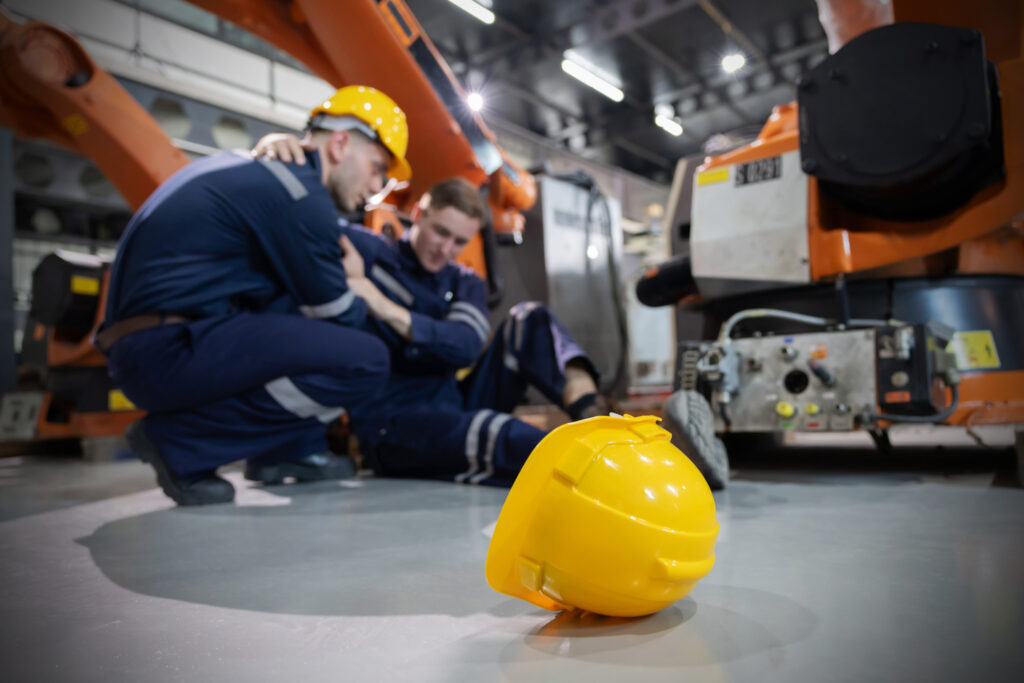October 14, 2025
Worker Collapse Training, what to do when a coworker is down

October 14, 2025

Picture this: the office hum is rolling along, keyboards clacking, coffee mugs clinking, when suddenly someone hits the floor. The chatter stops. The air shifts. In that split second, everyone freezes. Your brain says, “Wait, what just happened?” and your heart says, “Do something!”
This is the moment that separates stunned silence from smart action. Because when someone collapses, every second counts. You don’t need to be a superhero or a TV doctor. You just need to know the steps, trust yourself, and move.
Let’s break it down so that if you’re ever in that moment, you’ll go from panic to purposeful in less than 60 seconds.
The first rule of emergency response? Don’t charge in without thinking. Yes, speed matters, but so does safety. If you rush into a situation without checking your surroundings, you risk becoming “victim number two.”
Take two quick seconds to scan: Is there any danger nearby, live wires, heavy equipment, spilled chemicals? If it’s safe, approach.
Next, check responsiveness. Tap their shoulder, call their name loudly, and see if they stir. If there’s no response, check for breathing. Look for chest movement, listen for breath sounds, and feel for air against your cheek.
If they’re not breathing normally or not breathing at all, you’re not in a “wait and see” scenario. You’re in a “time equals survival” scenario.
According to OSHA, survival rates dramatically improve when immediate first aid, including CPR, is administered before emergency services arrive. Seconds aren’t just numbers here, they’re life.
Too often in emergencies, someone yells, “Call 911!” and everyone assumes someone else did it. The result? Precious minutes wasted.
Be specific. Point to a person and assign them: “You, call emergency services now.” Have them report:
If an AED (Automated External Defibrillator) is nearby, assign someone else to grab it immediately. Clear delegation prevents confusion and keeps momentum moving in the right direction.
Here’s where most people freeze. They think, “I’m not trained, I can’t do CPR.” But modern CPR guidelines make it simpler than ever, and you don’t have to be certified to make a difference.
Hands-only CPR is straightforward:
If someone brings the AED, turn it on and follow the voice prompts. AEDs are designed to guide you step-by-step, even if you’ve never touched one before.
The key is persistence. Keep compressions going until emergency responders arrive and take over. Your arms may tire, but switching off with another person can keep the rhythm strong.
When help arrives, step back, give them space, and be ready to answer questions. Emergency responders will want to know what happened, when it happened, and what actions you took.
Once the immediate crisis is over, there’s still work to do. Incident reporting ensures details are recorded accurately. Team debriefs give people a chance to talk about what happened, because yes, responding to an emergency is stressful, and it can take a toll.
It’s also the time to reflect: Did we respond quickly? Did we know where the AED was? Did we assign roles clearly? These insights aren’t about blame; they’re about making sure the next response is even stronger.
Emergencies are unpredictable, but the aftermath is an opportunity to turn chaos into preparedness.
The reality is simple: when a worker collapses, most bystanders want to help, but hesitation often gets in the way. Training eliminates hesitation. It creates muscle memory that overrides panic.
The National Safety Council estimates that about 60% of workplace deaths from sudden cardiac arrest could be prevented with immediate CPR and AED use. That’s not a statistic to gloss over. That’s the difference between a workplace tragedy and a second chance at life.
When employees are trained, they don’t just know what to do; they believe they can do it. That confidence is contagious, and it spreads calm instead of panic.
In a collapse, hesitation costs time, and time is survival. Our First Aid-CPR Training Course gives you the confidence to move from “someone should do something” to “I know what to do.” Because when the chatter turns to silence, training is what turns ordinary employees into lifesavers.
That moment when the chatter stops and someone hits the floor will always feel shocking. But shock doesn’t have to equal helplessness. With a clear plan, quick action, and calm communication, you can keep a coworker alive until help arrives.
The formula is simple:
Emergencies don’t wait for perfect timing or perfect training. But being ready, through knowledge, practice, and awareness, means when life throws chaos your way, you’ll know exactly how to respond.